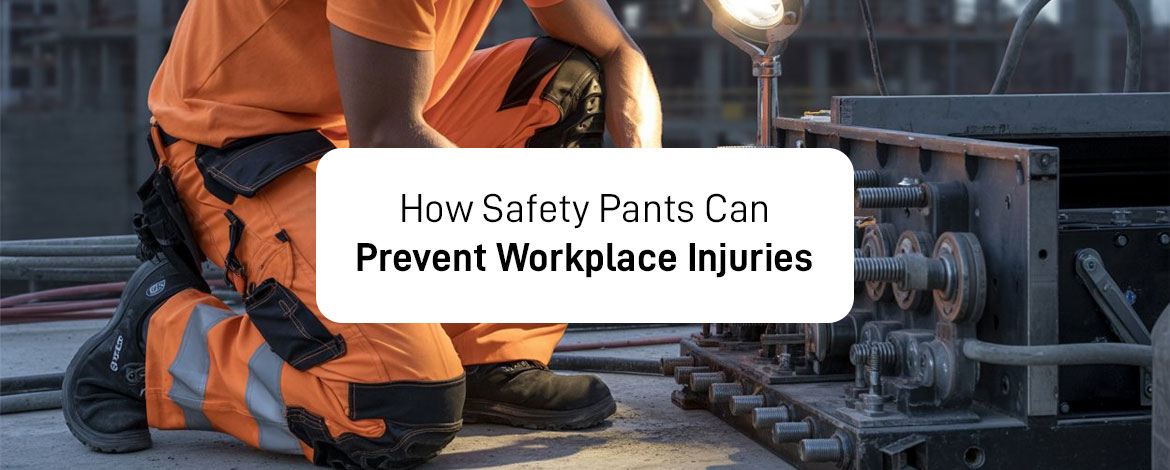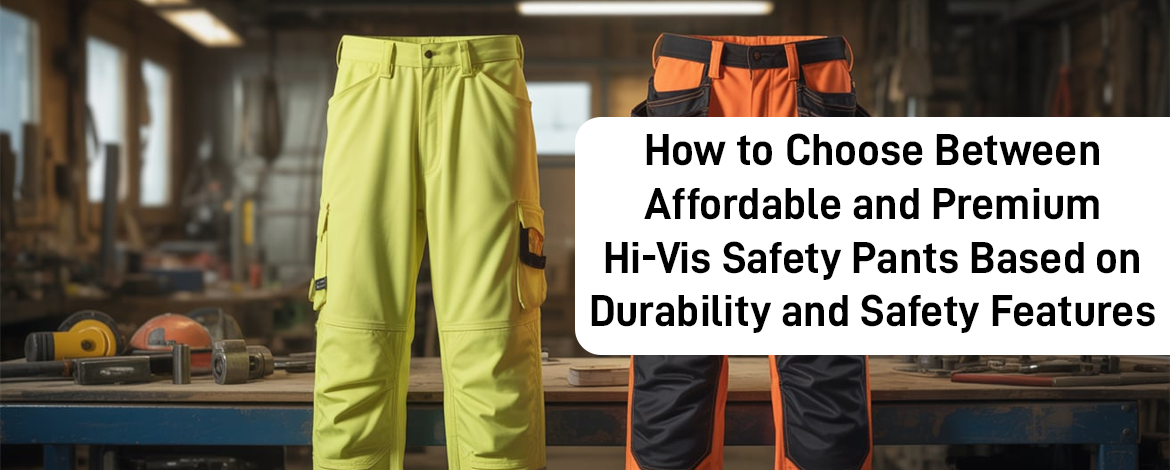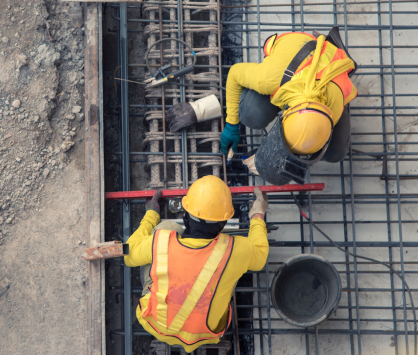How Safety Pants Can Prevent Workplace Injuries
- 15 min read

Workplace safety is of utmost priority across industries. From construction sites to manufacturing plants, the proper protective gear can make all the difference between a safe day at work and a serious injury.
Safety pants play a crucial role in protecting workers from physical hazards, chemical exposure, and environmental dangers among the essential safety equipment.
These specialized trousers are designed for durability and comfort, letting workers perform their tasks efficiently while staying safe.
In this article, we will learn all about safety pants, their types, key features, how they prevent injuries, tips for choosing the right pair, and proper maintenance practices.
What Are Safety Pants?
Safety pants are personal protective equipment (PPE) that shield the lower body from workplace hazards. Unlike regular work trousers, safety pants use high-quality materials and reinforced designs that improve durability, protection, and visibility. They are essential in industries where employees face risks such as sharp objects, heavy machinery, chemical spills, or fire hazards.
There are several types of safety pants tailored to specific work environments-
- Flame-resistant (FR) pants- Made from materials that resist ignition and reduce burn injuries. Ideal for welding, electrical work, and chemical industries.
- High-visibility pants- Typically bright-colored with reflective strips, helping workers remain visible in low-light conditions or near moving machinery.
- Cut-resistant pants- Constructed with Kevlar or high-strength fibers to prevent injuries from sharp tools and equipment.
- Waterproof or chemical-resistant pants- Protect against liquid spills, chemicals, and other hazardous substances.
The choice of safety pants depends on the industry, work environment, and specific hazards employees may face.
Key Features of Safety Pants That Prevent Injuries
Safety pants are not just about thick fabric. They incorporate several design elements and materials to provide maximum protection. Here are the key features that make safety pants indispensable for workers-
1. Reinforced Knees and Seams
Many safety pants include reinforced knees and double-stitched seams to withstand heavy use and reduce wear and tear. This reinforcement protects workers from abrasions, cuts, and impact injuries while kneeling, climbing, or handling tools.
2. High-Visibility Elements
High-visibility safety pants feature reflective strips or fluorescent colors, ensuring workers are easily seen in dimly lit areas or busy sites. This feature significantly reduces accidents caused by poor visibility.
3. Flame-Resistant Fabric
Industries dealing with heat, sparks, or open flames require flame-resistant pants. These trousers are made from specialized materials that self-extinguish or resist ignition, protecting workers from burns and fire-related injuries.
4. Cut and Puncture Resistance
Certain safety pants are designed to protect against sharp objects, tools, and machinery. Materials like Kevlar, ballistic nylon, or high-tensile polyester fibers resist cuts and punctures, ensuring lower-body safety in high-risk environments.
5. Waterproof and Chemical Resistance
Waterproof and chemical-resistant safety pants prevent injuries from chemical spills, oils, or wet surfaces. This feature is essential in laboratories, chemical plants, and outdoor work environments exposed to harsh weather conditions.
Workplace Hazards Addressed by Safety Pants
Safety pants are more than just protective clothing—they are a proactive solution to common workplace hazards. Here’s how they help reduce injuries-
1. Cuts, Abrasions, and Punctures
Construction, manufacturing, and metalwork workers often deal with sharp tools, nails, and machinery. Cut-resistant safety pants minimize the risk of injuries caused by accidental contact with these hazards.
2. Burns and Fire Hazards
Flame-resistant safety pants protect workers from burns due to sparks, flames, or hot surfaces. They are essential for welders, electricians, and industrial workers handling flammable substances.
3. Chemical and Liquid Exposure
Chemical-resistant pants prevent skin burns, rashes, and long-term health risks caused by exposure to hazardous liquids. They are ideal for laboratories, cleaning staff, and chemical plant workers.
4. Slips and Falls
Some safety pants feature reinforced padding and non-slip materials in critical areas. This minimizes the risk of injury, especially on uneven and slippery surfaces.
5. Visibility-Related Accidents
High-visibility pants help prevent collisions and accidents in low-light conditions or busy industrial environments. Workers wearing reflective safety pants are more easily noticed by drivers, equipment operators, and coworkers.
Choosing the Right Safety Pants
Selecting the right safety pants requires careful consideration of the work environment, job requirements, and safety standards. Research from Statista indicates that the global protective clothing market is approximately priced at $10.3 billion in 2023 and likely to grow to $18.6 billion by 2033, reflecting growing awareness of workplace safety . Allied Market Research. Here are some factors to consider
1. Industry-Specific Requirements
Different industries demand different types of protection. Construction workers may need high-visibility and cut-resistant pants, while laboratory staff may require chemical-resistant pants.
2. Material and Durability
Opt for pants made of durable, high-quality materials that can withstand daily wear and tear. Fabrics like Kevlar, heavy-duty cotton blends, and polyester are commonly used in safety pants.
3. Fit and Mobility
Safety pants should allow a full range of motion. Ill-fitting trousers can hinder movement, causing discomfort and increasing the risk of accidents. Look for ergonomic designs with adjustable waistbands and stretchable fabrics.
4. Compliance with Safety Standards
Ensure that the safety pants comply with relevant safety standards, like OSHA, ANSI, or NFPA, depending on your location and industry. Certified pants provide guaranteed protection against specific hazards.
5. Comfort and Breathability
Comfortable pants encourage workers to wear them consistently. Look for breathable fabrics, moisture-wicking liners, and ventilation options to maintain comfort during long shifts. Studies show that 88% of workers have access to PPE when needed, but comfort plays a crucial role in compliance. OSHA Outreach Courses
Maintenance and Care Tips
Proper maintenance of safety pants is essential to preserve their protective properties. Follow these tips for longevity and safety-
- Regular Inspection- Check for wear and tear, holes, or weakened seams. Replace pants showing significant damage.
- Correct Washing- Follow manufacturer instructions, especially for flame-resistant or chemical-resistant pants. Avoid harsh detergents that may compromise safety properties.
- Proper Storage- Store pants in a dry, cool place away from chemicals, moisture, or direct sunlight.
- Timely Replacement- Even well-maintained pants lose effectiveness over time. Replace safety pants according to the manufacturer’s recommended lifespan.
Benefits Beyond Injury Prevention
While the primary purpose of safety pants is to prevent injuries, they offer additional benefits-
- Improved Productivity- Workers feel more confident and comfortable, which improves efficiency and focus.
- Cost Savings- Reducing injuries lowers medical costs, downtime, and compensation claims.
- Long-Term Health- Continuous protection minimizes long-term injuries, burns, or exposure-related health problems.
- Workplace Compliance- Proper use of safety pants ensures adherence to legal safety regulations, protecting the company from penalties.
Wrapping Up
Safety pants are a critical component of workplace safety. They protect workers from cuts, burns, chemical exposure, and visibility-related accidents while providing comfort and mobility. Selecting the right pair requires considering the specific hazards of the job, material durability, fit, compliance with safety standards, and maintenance practices.
Investing in quality safety pants safeguards employees, uplifts productivity, minimizes downtime, and ensures a safer work environment. Whether you work in construction, manufacturing, chemical labs, or any high-risk industry, safety pants are a non-negotiable part of your protective gear.
Prioritizing safety pants is more than a regulatory requirement- it's a commitment to worker well-being and long-term workplace efficiency. Make safety pants an essential part of your workwear today and ensure that protection, comfort, and compliance go hand in hand.

From construction zones to runways, high-visibility vests are vital PPE, enhancing worker visibility, preventing accidents, and ensuring safety on the job
- 7 min read

Selecting the right safety pants can significantly affect a worker's protection and comfort on the job.
- 10 min read

If you do hard, physical work in cold conditions, you need a Hi Vis Kings jacket that can hang tough.
- 3 min read













